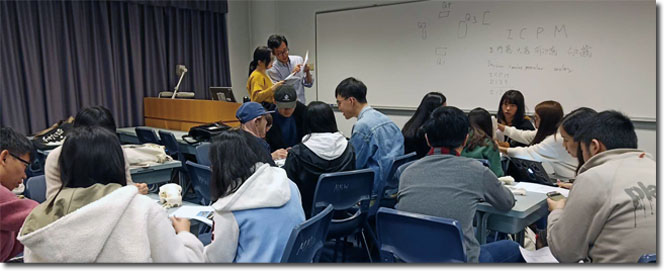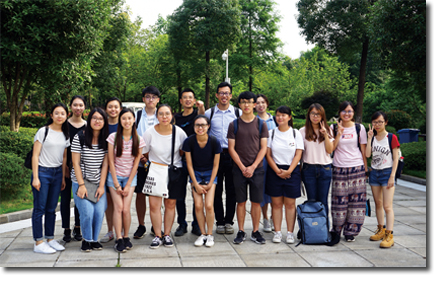|
Professor Lam Weng Cheong has been teaching at The Chinese University of Hong Kong under the joint appointment by the Department of Anthropology and the Department of History since 2015. Professor Lam has taught four General Education courses, namely, UGEA2330 China's Cultural Heritage, UGEB2502 Human Evolution, UGEB2505 Deciphering the Past: Culture, Archaeology and Science, and UGEC1633 Understanding Archaeology. His research currently focuses on ancient market exchange and the development of metal technology in ancient China. Professor Lam believes that the role of a teacher is to make academic knowledge easier to understand and to inspire students to see the connections between the past and the present in human societies.
|
 |
Teaching Philosophy
I love my subjects of teaching. I have taught four General Education courses in the past five years: UGEA2330 China’s Cultural Heritage, UGEB2502 Human Evolution, UGEB2505 Deciphering the Past: Science, Archaeology, and Culture, and UGEC1633 Understanding Archaeology. I believe that the role of teaching is to be an “intellectual midewifery”. When I designed these courses, I also reminded myself the critical challenge that the humanities were encountering during this globalized era. Since the search for “factual knowledge” on-line becomes much more convenient, students can easily access to photos and descriptions about the great archaeological discoveries around the world just by searching digital databases nowadays available on many museum websites. As a result, the value of learning experience via lectures that focus merely on “factual knowledge” is declining. However, the humanities have an important value, which probably will not change regardless of the development of technology, of offering different perspectives on issues that our recent world still is struggling and entangling with, such as health problems, and long-term social traditions that have navigated the development of history in later times. Therefore, I view my teaching as a precious opportunity to share and to learn: to share my idea about the meaning of the subjects and ways to identify problems, and to learn from students how to add more meaning to the study and learning experience of the human past.

One key element of my teaching is offering a big picture of the subject and its relevance to our daily lives. For instance, when I was teaching UGEB2505 Deciphering the Past: Science, Archaeology, and Culture, I started the beginning of each lecture by showing the exhibition of certain types of artifacts in different museums, which were related to the techniques that I would introduce later in the lectures. Then I asked my students to evaluate the exhibition (i.e. how they felt about the current interpretation), and invited other suggestions from students about the aspects that they would like to learn more from the exhibition (i.e. how to look for the alternatives), and about critical comments on ways which they were not satisfied with the story of the artifacts provided. Through the introduction of various alternative techniques, I tried to transform each lecture from a presentation of factual knowledge about scientific methods and analytical results to an “intellectual journey” through which students could understand how archaeological science is able to make a difference and provide an alternative way for us to understand culture and the past.

In the discussion during lectures and tutorials, I have been careful not to provide an easy and direct answer. Instead, I would try to arouse students’ concerns on the implications and issues involved in the case studies. Also, according to my experience, what students learn from each other is often valuable. To encourage peer-learning, all my courses involve a group project at the end, and the last few sections of tutorials would be used for presentation. Students who did not need to present had to evaluate and comment on other students’ works. In addition, I integrated the major concepts, ideas, and arguments from the lectures into the designs of hands-on practice in the tutorials. I believe that one critical way to make the lectures or tutorials more engaging is to let students identify the answers by themselves and to learn from their peers. We have to trust that our students are capable of identifying the answers on their own, as long as we the teachers provide enough guidelines for them.

Knowledge in fact includes meanings of multiple levels. For students, the ways of understanding the value of their study subjects sometimes are more important than the basic factual knowledge that could be easily found on websites. My aim is that, through studying various cases together in the lectures, some day in the future the students will remember the insight that they gained through the discussion in my classes and will use it to make sense of the fast-changing world around them. Last but not the least, teaching is often not an innate skill. On my journey of learning how to teach, I am fortunate to have had many mentors and role-models in my departments, and great students providing effective feedback for me to improve the learning experience of my classes.

|


